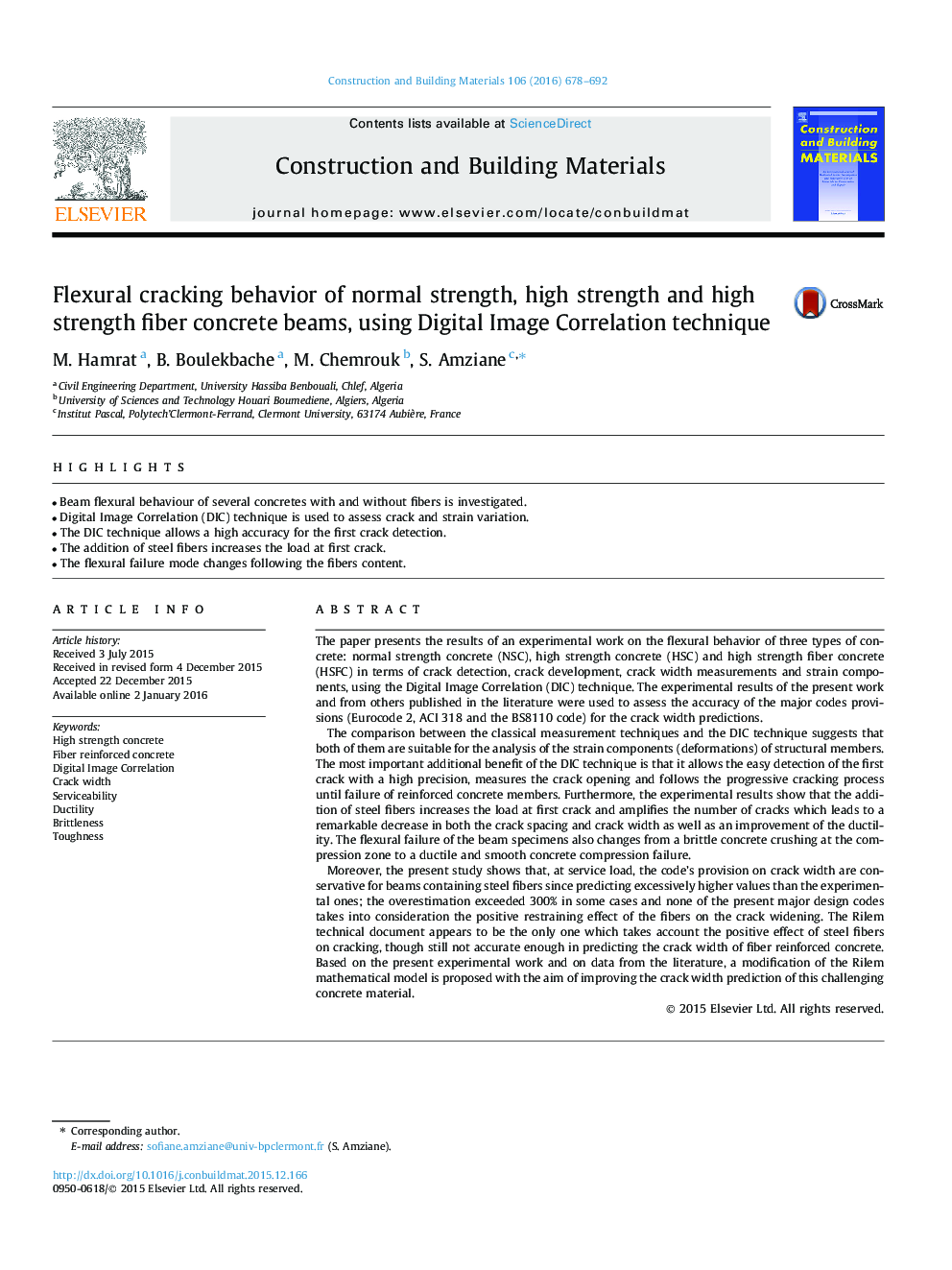| کد مقاله | کد نشریه | سال انتشار | مقاله انگلیسی | نسخه تمام متن |
|---|---|---|---|---|
| 256529 | 503553 | 2016 | 15 صفحه PDF | دانلود رایگان |
• Beam flexural behaviour of several concretes with and without fibers is investigated.
• Digital Image Correlation (DIC) technique is used to assess crack and strain variation.
• The DIC technique allows a high accuracy for the first crack detection.
• The addition of steel fibers increases the load at first crack.
• The flexural failure mode changes following the fibers content.
The paper presents the results of an experimental work on the flexural behavior of three types of concrete: normal strength concrete (NSC), high strength concrete (HSC) and high strength fiber concrete (HSFC) in terms of crack detection, crack development, crack width measurements and strain components, using the Digital Image Correlation (DIC) technique. The experimental results of the present work and from others published in the literature were used to assess the accuracy of the major codes provisions (Eurocode 2, ACI 318 and the BS8110 code) for the crack width predictions.The comparison between the classical measurement techniques and the DIC technique suggests that both of them are suitable for the analysis of the strain components (deformations) of structural members. The most important additional benefit of the DIC technique is that it allows the easy detection of the first crack with a high precision, measures the crack opening and follows the progressive cracking process until failure of reinforced concrete members. Furthermore, the experimental results show that the addition of steel fibers increases the load at first crack and amplifies the number of cracks which leads to a remarkable decrease in both the crack spacing and crack width as well as an improvement of the ductility. The flexural failure of the beam specimens also changes from a brittle concrete crushing at the compression zone to a ductile and smooth concrete compression failure.Moreover, the present study shows that, at service load, the code’s provision on crack width are conservative for beams containing steel fibers since predicting excessively higher values than the experimental ones; the overestimation exceeded 300% in some cases and none of the present major design codes takes into consideration the positive restraining effect of the fibers on the crack widening. The Rilem technical document appears to be the only one which takes account the positive effect of steel fibers on cracking, though still not accurate enough in predicting the crack width of fiber reinforced concrete. Based on the present experimental work and on data from the literature, a modification of the Rilem mathematical model is proposed with the aim of improving the crack width prediction of this challenging concrete material.
Journal: Construction and Building Materials - Volume 106, 1 March 2016, Pages 678–692
